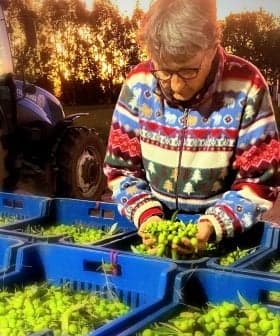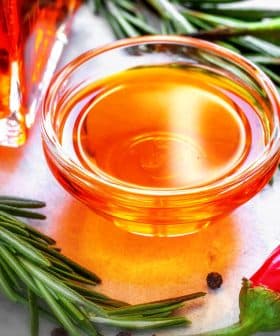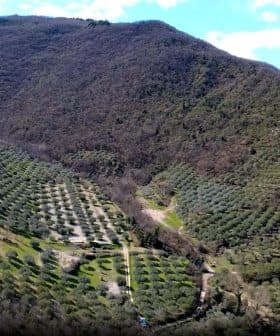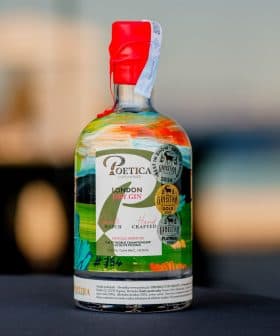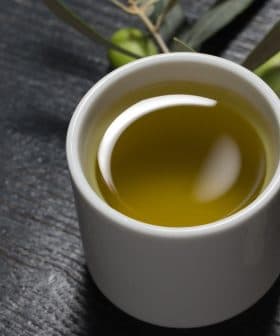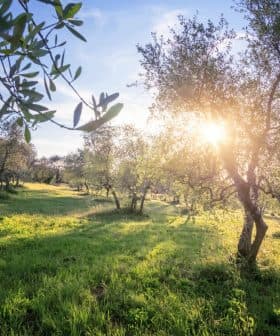 8.6K reads
8.6K readsProduction
In Italy, Olive Growers See Signs of a Promising Harvest

Italian olive oil producers are optimistic about the 2023/24 crop year despite challenges such as olive fruit fly infestations and extreme weather events. The coming harvest is expected to be impacted by spring rain, with some regions experiencing reduced production potential due to heavy rainfall and hailstorms. Italy’s olive oil market is closely monitored due to poor results in major producing countries in the previous crop year and rising prices.
An early survey conducted in several Italian regions by Olive Oil Times found that many producers are hopeful as they look ahead to the 2023/24 crop year.
While it is too early to predict how much olive oil may be produced in Italy, most producers reported abundant flowering, with some saying they have also seen an optimal fruit set.
However, they all listed potential olive fruit fly infestations and extreme weather events as the most likely challenges they must address in the coming weeks.
Significant portions of the Italian peninsula were affected by considerable rainfall during springtime.
See Also:2023 Harvest UpdatesWhile the rains have not undone the effects of the long-standing drought, rainfall reached record levels in May in some regions, and the Po Valley in the north experienced disruptive floods.
In the same weeks, repeated storms accompanied by strong winds and hail were reported in several locations.
In a southern region such as Basilicata, home to almost 30,000 hectares of olive orchards, exceptionally heavy rainfall and intense hailstorms severely affected farmers.
Current estimates show that Basilicata’s olive oil production potential for the 2023/24 crop year has been reduced by at least 50 percent. The region produces approximately 2.5 percent of Italy’s annual olive oil yield.
In many locations, spring rain is expected to significantly impact the olive oil yields of the coming harvest.
The build-up to the coming harvest has been better than anticipated for growers in one of Italy’s northernmost olive-growing regions.
“We expected this to be an ‘off-year,’ but last season’s unique conditions impacted [the olive trees] and set us up for the current season, which has started well, even if not excellent,” Furio Battelini, the technical director of Agraria Riva del Garda, told Olive Oil Times.
On and off years
In the context of olive oil production, the term “off year” refers to a year in which olive trees produce a lower yield of olives. Olive trees have a natural cycle of alternating high and low production years, known as “on years” and “off years,” respectively. During an “on year,” the olive trees bear a greater quantity of fruit, resulting in increased olive oil production. This is influenced by various factors, including weather conditions, such as rainfall and temperature, as well as the tree’s age and overall health. Conversely, an “off year,” also known as a “light year” or “low production year,” is characterized by a reduced yield of olives. This can occur due to factors like stress from the previous “on year,” unfavorable weather conditions, or natural fluctuations in the tree’s productivity. Olive oil producers often monitor these cycles to anticipate and plan for variations in production.
“During flowering, we only had very light rainfall, so the fruit setting has also gone well,” he added. “Important rainfall came in May and replenished the water reserves, so this year, we do not expect problems with irrigation.”
For the next few months, Battelini hopes for a hot summer “to keep the spread of the olive fruit fly at bay.”
Pietro Pollizzi, the owner of Enotre, told Olive Oil Times that flowering and fruit set are promising in his orchards in the northern Veneto region. Pollizzi noted that he would be on the lookout for potential pathogens due to the unusual humidity.
Ceil Friedman, the co-owner of Cordioli, also in Veneto, confirmed that the flowering and the fruit set have been satisfying.
“We are really in the hands of Mother Nature now,” she told Olive Oil Times. “We can cope with everything, like insects or fungi, by deploying organic treatments. But the weather is on its own, and just like every year, we fear hailstorms.”
In crucial Italian olive oil production regions, such as Tuscany, growers are reporting significant flowering. However, this has not always resulted in a satisfying fruit set.
“The flowering was good, but the fruit setting is lower,” Daniele Santini, the founder of Entimio, told Olive Oil Times. “It would almost seem an ‘off-year’ in a few areas.”
“Humidity and warmth are helping the olive fruit fly, which needs to be closely monitored,” he added.
In Florence, the producers behind Frantoio Pruneti expressed worries about possible temperature spikes in the next few weeks.
“Flowering was good but delayed by the long winter first, and by temperatures and intense rainfall after that,” co-owner Gionni Pruneti told Olive Oil Times.
Pruneti noted how late flowering might impact olive development if the young fruits face extremely high temperatures.
“The best weather in the next three months would be a hot summer without sudden temperatures spikes, which could lead to olive drops,” he said.
In another central Italian region, Umbria, producers hope for good results.
“This year, we happily had a wonderful flowering. Though, others around us mentioned that they did not,” the producers behind Rastrello told Olive Oil Times.
“Our spring was much longer than the last couple of drought years, and our transition into summer was gradual, which helped the healthy development of the fruit,” they added.
Rastrello’s olive trees were affected by heavy hailstorms and lots of rainfall. “Ideally, from now until August, we would love one day of rain every two weeks,” they said.
In the central Lazio region, Francesco Agresti, the owner of Agresti 1902, told Olive Oil Times that he had seen average flowering in his groves less exposed to weather extremes.
“In other areas, those considered at higher risk of being impacted, we now estimate [a potential yield] 50 percent lower than our best seasons,” Agresti said.
“The last part of spring hit us with an unusual volume of rainfall in terms of frequency and intensity,” he added. “Should intense storms persist, the season’s yield would probably be highly compromised.”
Due to its unique orographic characteristics, Italy has several distinct climate regimes that may highly differentiate conditions among regions and even within adjacent cultivating areas.
Domenico Sperlonga, the owner of Olio dei Papi in southern Lazio, reported a flowering and fruit set that has led him to believe he will reach 80 percent of production compared to his best crop years.
Similar results are reported in areas of the Italian south, where most Italian olive oil is produced.
In Campania, Case d’Alto confirmed to Olive Oil Times an “excellent olive flowering” and cited temperature spikes as one of the current challenges olive trees have to cope with.
Meanwhile, the producer behind Olearia San Giorgio in Calabria, Italy’s second-largest olive oil-producing region, said they anticipate a promising harvest.
“Flowering was excellent even in the midst of repeated rainfall and the risk that so much rain could be too much,” owner Antonio Fazari told Olive Oil Times. “What we now hope is that the rain ends and summer truly starts. This would favor the healthy accumulation of oil in the new olives.”
“Should rain fall in July and August, that could stimulate the olive fruit fly population and make this coincide with the moment during which the olive drupes are more attractive for the insects,” he added.
Some of Entimio’s olives also come from the south, with an average fruit setting reported in northern Puglia and an auspicious situation in Sicily.
Puglia is the most relevant olive oil-producing region, accounting for approximately half of Italy’s total yield.
Describing the situation on his southern farm in Puglia, Sperlonga noted how in the region, “we have seen a wet and cool climate during flowering which had a slight negative impact on fruit setting.”
“There, we have also experienced the first heatwave with temperature excursions of more than 16 ºC,” he added. “First, prudent estimates talk of a 50 to 60 percent potential yield in the current season. We now fear the olive fruit fly, whose attacks would impact on quality.”
Frantoi Cutrera reports some impact from higher than average rainfall in southern Sicily.
“During flowering, we have recorded abnormal rainfall volumes compared to the Sicilian average,” Giuseppe Ardagna, the head of the quality and production unit of the company, told Olive Oil Times. “It has not rained this much since 1921.”
“Such volumes have reduced the flowering by 15 to 20 percent,” he added. “The olive trees are healthy and strong, though, so we can still rebound. Even more so, if we have a dry and hot summer. In such a case, we can aim for a high-quality product.”
“Should humidity persist and temperatures stay moderate in the summer, we would have ideal conditions for the spread of different pathogens, such as fungi, bacteria and insects,” he added.
Italy is among the most relevant olive oil-producing countries in the world. The coming crop year is closely followed by the whole sector, especially with the poor results reported in most major producing countries in the 2022/23 crop year.
In its latest report, the Italian Institute of Services for the Agricultural and Food Market (Ismea) wrote how the olive oil market is going through one of its most dynamic periods in recent years.
This dynamism has mostly been fueled by Spain’s historically poor harvest in the 2022/23 crop year and the 27-percent drop in Italian production.
As olive oil prices continued to rise in 2023, Ismea warned of quickly lowering volumes of olive oil storage and the effects a shortage would have on bottlers and exporters.
“For the olive oil sector, just as for all sectors, the rising costs continue to be an unsolved challenge,” Ismea wrote. “On top of that, there is an early warning about the next olive oil season because of the more frequent extreme weather events and the drought.”




